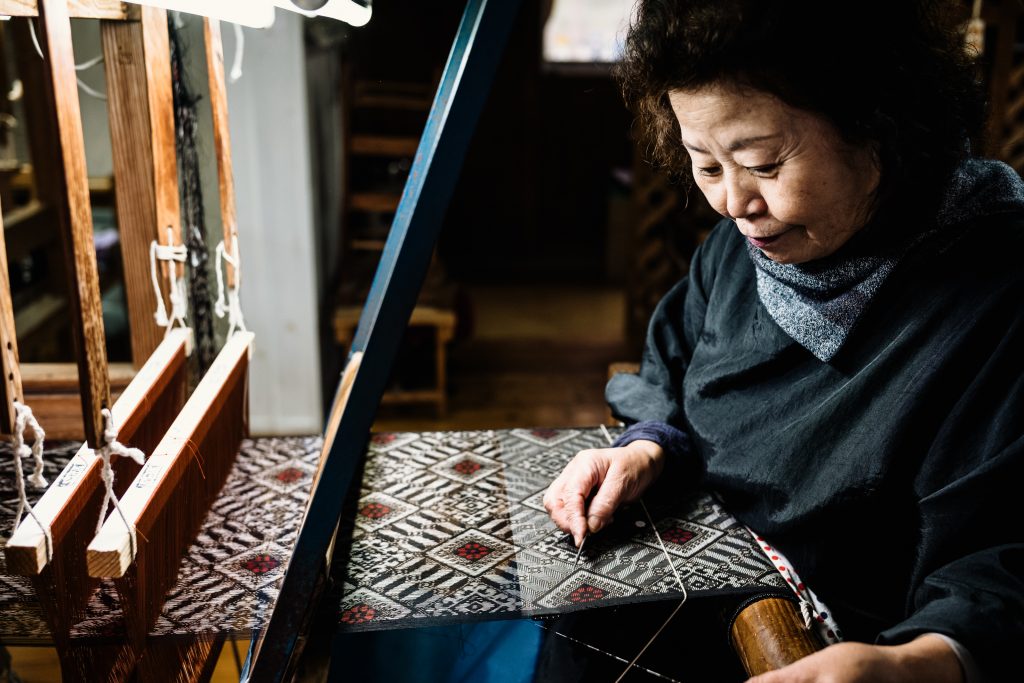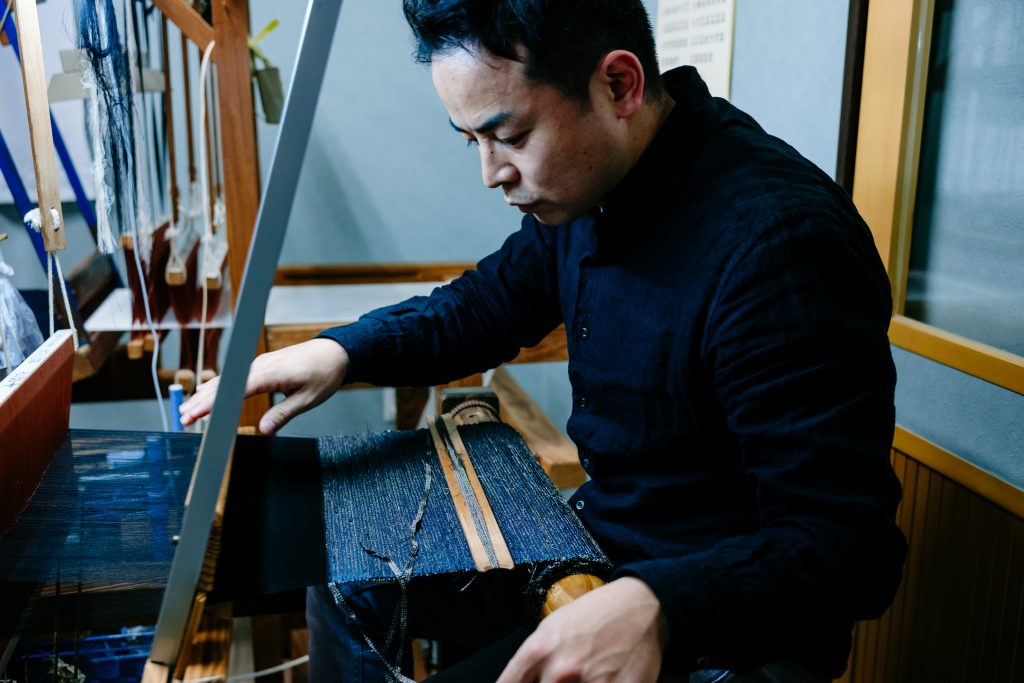Our Visit With the Traditional Ikat Weaving Artisans In Amami Ōshima, Japan
Celebrating a historic Japanese craft at risk of being forgotten

It’s not surprising that Japan and its incredible craft culture is changing along with that in other parts of the world, with new techniques, often enabled by technology, creating similar products to those painstakingly created by hand. Companies that have been in business for hundreds of years, often family owned, are increasingly giving up their traditional craft or fighting to stay relevant and financially stable. On a recent visit to an island in Japan’s southern Amami archipelago we got a first hand look at the challenges and opportunities these traditional family owned business are facing in a world with fast-changing tastes.
Amami Ōshima, the largest of Japan’s Satsunan islands, sits between Okinawa and Kyūshū at the southern end of the nation. Though it’s been a popular resort area domestically it’s not very well known of outside of Japan. Celebrated for its great weather, beautiful beaches and incredible natural beauty it’s popular with those who enjoy outdoor activities. Others cherish it for its Kokuto shochu (made from sugar cane) which can only be legally distilled on the island in one of its 120+ distilleries.

It’s also considered home to some of the finest textiles made in Japan traditionally used in kimono, featuring the traditional Ikat weaving technique and its endemic Dorozome—an Ikat woven fabric that is also dyed in local mud. Ikat is a 1,300 year old weaving technique believed to be of Asian origin, but practiced in several countries around the world.

Amami Ōshima was once home to a thriving Ikat industry known for its precise patterns, though today there are only a handful of skilled artisans who still practice this demanding craft. The most famous type of Ikat (known as double Ikat or tate-yoko gasuri, with both warp and weft threads being hand-colored) that is made on the island involves 40 individual processes. It’s the most complex to master and the most time consuming to make—demanding patterns can take 18 months for a single roll of fabric for one kimono and easily top $50,000.

Modern Jacquard looms can be programmed to weave complex patterns using different colored threads. And while they can be breathtaking, much more accessible and much faster to make, they can’t compare to those created by hand. The biggest difference is that in tate-yoko gasuri, the material is woven, dyed, unwoven, then each single thread is hand colored (a roll can easily consist of more than one million hand colored segments on the individual threads) and rewoven, resulting in incredibly precise patterns that occur when the hand colored threads meet each other in the loom. It’s these fabrics that a handful of the remaining dying and weaving houses create for those who seek out and appreciate the subtle and quintessentially Japanese beauty that others may not even notice. But this innovation was created a long time before automated looms and computer aided design, and that it’s still done the same way today speaks volumes about Japan’s craft culture, heritage and way of life.

Dorozome is a two-part dyeing process and is another element of the island’s tate-yoko gasuri tradition (though it is celebrated on its own as well). Made from the Yeddo hawthorn tree, it starts by cutting branches into wood chips and bark, which is boiled over a fire to create a brown natural dye called Sharinbai. This reddish dye can be found in other parts of the country, though the manner in which it is prepared on Amami Ōshima is unique. Textiles (silk traditionally) are repeatedly dunked in the Sharinbai, rinsed and then dunked in a mud pit, where the iron-rich soil creates a unique color that can only be produced in Amami. This process is repeated more than 80 times to create the Dorozome, which can then become part of the tate-yoko gasuri process. We observed this process and got hands-on at the island’s Kanai Kougei workshop.

Over the last few years the younger generation of family members at some of Amami Ōshima’s remaining weaving companies who were long time competitors realized that part of their survival strategy required them to join forces to help educate the younger generations in Japan and the world at large about their incredible craft tradition, and the association for authentic Amami Oshima Tsumugi was created. Today, the four family-owned businesses (Tonari Orimono, Yumeorinosato, Hajime Shoji and Maeda Tsumugi Kogei) explore new uses for their fabric outside of its traditional place in high end kimono, such as textiles for the home. One challenge in particular has been to develop looms that can make wider textiles, which are much easier to use in interiors or decorative environments.

In meeting these artisans and their new role as entrepreneurs, we were struck by their passion and dedication to tradition, but also to seek new opportunities to educate, inform and inspire people to look at their work in a new light. They certainly impressed us, and we’ve begun a project working with them that we will unveil at Tokyo DesignArt in October 2019.












